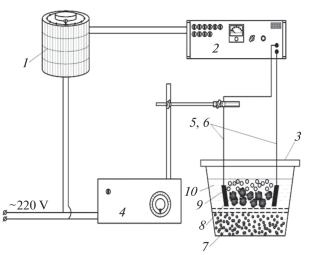水中电蚀分散法制备球形OT4合金粉末的x射线物相及元素组成研究
IF 0.3
Q4 METALLURGY & METALLURGICAL ENGINEERING
引用次数: 0
摘要
利用o4合金(Ti-Al-Mn系)工业废渣在蒸馏水中的电蚀分散法制备了球形颗粒粉末。粉末的元素组成主要以钛、铝和杂质为主。粉末颗粒的相组成分析表明α-Ti和不同价的钛氧化物(TiO和Ti2O3)相。该粉末可用于添加剂技术。本文章由计算机程序翻译,如有差异,请以英文原文为准。

X-ray Studies of the Phase and Elemental Compositions of a Spherical Powder Prepared from OT4 Alloy Waste by Electroerosive Dispersion in Water
A powder consisting of spherical particles is prepared by the electroerosive dispersion of industrial wastes from OT4 alloy (Ti–Al–Mn system) in distilled water. The elemental composition of the powder is mainly presented by titanium, aluminum, and impurities. An analysis of the phase composition of the powder particles shows the phases of α-Ti and titanium oxides of different valences (TiO and Ti2O3). The powder can be used in additive technologies.
求助全文
通过发布文献求助,成功后即可免费获取论文全文。
去求助
来源期刊

Russian Metallurgy (Metally)
METALLURGY & METALLURGICAL ENGINEERING-
CiteScore
0.70
自引率
25.00%
发文量
140
期刊介绍:
Russian Metallurgy (Metally) publishes results of original experimental and theoretical research in the form of reviews and regular articles devoted to topical problems of metallurgy, physical metallurgy, and treatment of ferrous, nonferrous, rare, and other metals and alloys, intermetallic compounds, and metallic composite materials. The journal focuses on physicochemical properties of metallurgical materials (ores, slags, matters, and melts of metals and alloys); physicochemical processes (thermodynamics and kinetics of pyrometallurgical, hydrometallurgical, electrochemical, and other processes); theoretical metallurgy; metal forming; thermoplastic and thermochemical treatment; computation and experimental determination of phase diagrams and thermokinetic diagrams; mechanisms and kinetics of phase transitions in metallic materials; relations between the chemical composition, phase and structural states of materials and their physicochemical and service properties; interaction between metallic materials and external media; and effects of radiation on these materials.
 求助内容:
求助内容: 应助结果提醒方式:
应助结果提醒方式:


